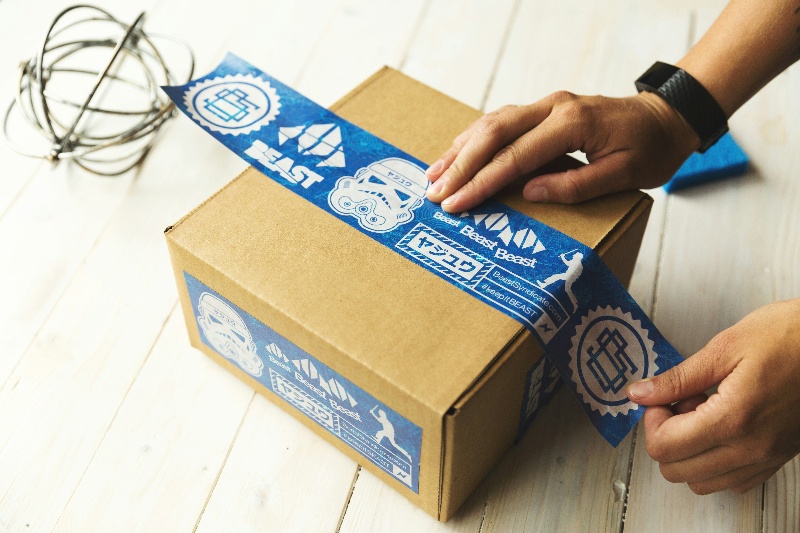How to Create a New ASIN in Amazon: A Step by Step Guide
What is Amazon ASIN?
Amazon Standard Identification Number (ASIN) is a 10-character alphanumeric identifier assigned by Amazon and its partners. It uniquely identifies a product within Amazon's vast inventory and is used to manage and track inventory. For books, an ASIN corresponds to the ISBN number, but for all other products, a new ASIN is generated when the product is uploaded to Amazon's catalog.
Where is Amazon ASIN used?
ASINs are essential not only for product management on Amazon's own site but also across its global marketplaces like Amazon.ca, Amazon.de, and others. Each product listed on Amazon has a unique ASIN, which simplifies product searching for customers across different regions.
How to find an ASIN on Amazon?
1. Product URL:Navigate to the product page on Amazon. The ASIN can typically be found within the URL, after the product name and “dp”.

2. Product Information:On the product’s detail page, scroll to the ‘Product information’ section where the ASIN is listed.

Related Concepts: GTINs, UPCs, ISBNS, and EANs?
The relationship between Amazon's ASIN (Amazon Standard Identification Number) and identifiers like GTINs, UPCs, ISBNs, and EANs is critical for product identification and catalog management on Amazon's platform. Here’s how they are interconnected:
- GTIN (Global Trade Item Number): This is a broad category that encompasses several types of data structures used to identify trade items globally. GTINs include UPCs, EANs, ISBNs, and other formats depending on the product and region. Amazon uses GTINs to create and manage its ASINs for products not previously listed on Amazon.
- UPC (Universal Product Code): This is a 12-digit barcode used predominantly in the United States to uniquely identify products in stores and online. When a new product is added to Amazon, the UPC can be used to generate a new ASIN if the product does not already exist in Amazon’s catalog.
- ISBN (International Standard Book Number): This is a unique identifier for books, allowing for more efficient marketing and distribution. In Amazon’s system, the ASIN for a book is the same as its ISBN, making the integration of book listings into Amazon's catalog straightforward.
- EAN (European Article Number): Now known as International Article Number, although the abbreviation EAN is still commonly used, this is a 12- or 13-digit product identification code similar to the UPC but used internationally. EANs are scanned at retail checkouts and can be used to list new products on Amazon, contributing to the generation of an ASIN.
When a seller wants to list a new product on Amazon, one of these identifiers (UPC, ISBN, or EAN) is typically required to create a new ASIN, unless the product already exists in Amazon’s catalog under an existing ASIN. Amazon utilizes these identifiers to ensure that every product listed is unique and can be easily found and managed within their massive inventory system. Thus, these codes are fundamental to the e-commerce giant's operational efficiency, contributing to a structured and searchable catalog.
When should you create a new ASIN or use an existing one?
Use an existing ASIN:If the product you intend to sell already exists in Amazon’s catalog, you should use the existing ASIN. This is common among resellers and retailers who offer products that are not unique to their brand.
Amazon ASIN requirements for your product
If you are selling a product that already exists on Amazon, you must use the existing ASIN. Amazon restricts the creation of new ASINs to avoid duplicates and maintain catalog integrity. Understanding the rules and regulations around Amazon ASINs is crucial for maintaining your standing as a seller on Amazon and ensuring your listings are optimized for success.
ASIN Limits:New sellers on Amazon are initially faced with limits on the number of new listings (offers and ASINs) they can create each week. This is designed to ensure that new sellers do not flood the market with products before proving their ability to manage inventory and fulfill orders responsibly. As you build your sales history and prove your reliability as a seller, Amazon gradually increases your capacity to create more listings. It is crucial to prioritize your product listings effectively during this initial phase. Veteran sellers who introduce a large volume of new listings may also find their accounts under review, and their ability to create new listings can be temporarily restricted depending on the outcome.
Duplicate ASINs:Creating duplicate ASINs is a common pitfall that can have serious repercussions. Before you create a new ASIN, it is imperative to check Amazon’s catalog to see if an existing ASIN already corresponds to your product. Failure to do this can lead to the creation of duplicate ASINs, which is a violation of Amazon’s policies. Such actions can lead to temporary suspension or even permanent removal of your selling privileges. Matching your product to an existing ASIN not only avoids these risks but also enhances the customer experience by simplifying the product search process. Additionally, it allows you to capitalize on the existing traffic and buyer interest associated with the product.
When to create a new ASIN:
- If your product is new to Amazon and does not match any existing ASINs.
- If you are a private label seller, brand owner, or have exclusive distribution rights.
How to Create an ASIN on Amazon
Creating an Amazon Standard Identification Number (ASIN) is a critical step for sellers on Amazon. There are two primary ways to create an ASIN:
1: Use an Existing ASIN for a Matching Product
If the product you intend to sell already exists on Amazon, you should use the existing ASIN. This process helps you list your product under an established Amazon listing, which is beneficial for resellers or retailers who are not selling unique or proprietary products.
How to use an existing ASIN on Amazon:
- Navigate to
Add a Productfrom the Catalog drop-down menu in Seller Central. - Use the “Find your products in Amazon’s catalog” search bar to locate your product. For better accuracy, use a specific product identifier like UPC, EAN, JAN, or ISBN.
- If applicable, click on “Show variations” to see different versions of the product.
- Select the condition of your product.
- Click on “Sell this Product.”
- Enter your offer details such as condition, price, quantity, and shipping options in the provided fields and select “Save.” Ensure all required fields marked with an asterisk are completed.

Note: This option is not available to Amazon Handmade sellers.
2: Create a New ASIN for a New-to-Amazon Product
If you have a new product that is not yet listed on Amazon, you will need to create a new ASIN. This option is ideal for brand owners or sellers with exclusive distribution rights.
How to create a new ASIN for a new product:
- Select
Add a Productfrom the Catalog drop-down in Seller Central. - Choose “I’m adding a product not sold on Amazon.”
- To list a new product, either:
- Search for your product’s category and click the Search icon, or
- Browse through the ‘Select a Product Category’ option to find the appropriate category and click ‘Select category.’ Accurately choosing your category helps buyers locate your product more easily.

- Enter all required information in the “Vital Info” and “Offer” tabs.
- Click “Save changes” to finalize your listing. You can edit this information at any time.
By understanding when to use an existing ASIN and when to create a new one, you can effectively manage your listings on Amazon and ensure your products are correctly cataloged under the appropriate product details pages. This strategic decision not only affects how your products are found by customers but also impacts your compliance with Amazon's selling policies.
Why is Amazon ASIN important for your business?
ASINs play a crucial role in inventory tracking, catalog data reference, and product page indexing for search and browsing on Amazon. This enables accurate product displays in search results, aiding customers in finding the right products quickly.
What You Can Do with an ASIN with Kua.ai
Kua.ai allows you to leverage your ASINs to:
- Optimize your listings for better visibility and conversion.
- Create superblogs and content that drive traffic.
- Develop social media posts to promote products.
- Design landing pages for marketing campaigns.
- Convert listings for other marketplaces such as Walmart, enhancing your product’s reach.
Conclusion
Understanding and utilizing Amazon ASINs effectively is vital for successful selling on Amazon. It not only helps in proper cataloging and inventory management but also enhances product discoverability, ultimately boosting sales. With tools like Kua.ai, you can further maximize the potential of your ASINs, ensuring your products stand out in the competitive e-commerce landscape.
Frequently Asked Questions (FAQs) About Amazon ASINs
How do I get an ASIN for my new Amazon product?
To obtain an ASIN for a product that is new to Amazon, you need to create a new product listing. Begin by selecting "Add a Product" from the Catalog drop-down in your Amazon Seller Central dashboard. Choose the option "I’m adding a product not sold on Amazon" and follow the prompts to enter the necessary product details, including the category, vital info, and offer details. Once you complete and save the listing, Amazon will automatically generate an ASIN for your new product.
Is every Amazon ASIN unique?
Yes, every ASIN on Amazon is unique. Each product listed on Amazon has its own ASIN, which is used to identify it uniquely within Amazon's vast inventory. However, it's important to note that ASINs are unique within a specific Amazon marketplace. This means a product may have different ASINs across different Amazon regional websites (like Amazon.com, Amazon.co.uk, etc.).
What is the difference between ASIN and UPC?
The Amazon Standard Identification Number (ASIN) is a unique identifier assigned by Amazon to each product listed on its platform. It is specific to Amazon and used internally for tracking inventory and organizing their extensive product database.
The Universal Product Code (UPC), on the other hand, is a commonly used standard barcode for retail product tracking in various countries, primarily in the United States. A UPC is a 12-digit number and barcode used globally to identify individual products at the point of sale.
ASINs are specific to Amazon's system and are assigned by Amazon itself, whereas UPCs are global standards used across many different stores and platforms for product identification.
Join 200,000+ Sellers Growing with Kua.ai
You may also interested...

How AI Helps Financial Advisors Turn Client Data Into Action

Unlocking Explosive Growth: The Ultimate Guide to Affiliate for Instagram for Shopify Sellers 2026













